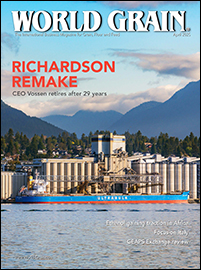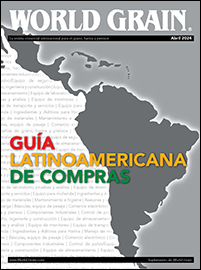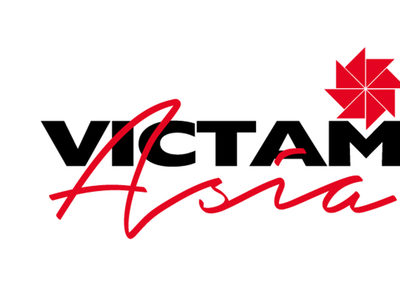 |
| James Blome, president of Bayer CropScience. |
Blome addressed what the future holds in crop development during the Canadian Global Crops Symposium in Calgary, Alberta, Canada. The event, which focused on planning for the future, was April 10-12.
It takes 10 to 12 years and more than $150 million to bring new products to the marketplace, Blome said. In addition, he noted the company is spending more on defending older products. The science, analytics and knowledge has improved in the decades since some products were first approved, so regulatory agencies are asking for products to be re-registered based on the new science, he said.
“I agree with that,” Blome said. “We’re choosing to invest in that product to keep it up to date; that’s the right thing to do. The result of that, though, is we’re spending more of discovery R&D on defense of older products. That’s stealing from future innovation.”
Last year, Bayer announced plans to acquire Monsanto Co. in a $6 billion transaction that Blome said is on track to close by the end of 2017. The deal brings together two highly complementary businesses, he said. Bayer is a crop protection company while Monsanto is a seed trait business.
“There is very little overlap but we will make changes if needed in the regulatory approval process,” he said. “It brings together two innovation powerhouses that perhaps have the size and scale to go forward and to bring the new technology, innovation and tools to growers.
“We’re excited by the opportunity to do this. The predictable, stable environment is a way to bring more people into this marketplace with a different point of view.”
Small companies may have difficulty traversing the regulatory pathways, which have become less predictable, Blome said.
“You have to prepare for surprises,” he said. Smaller companies may not be able to survive a 6- to 7-year delay in bringing a new product to market.
New scale
Bayer spends about $1 billion on research and development, but the companies that are really innovative in the world today, like Google, are spending 13 times as much, Blome said. Combining the research and development spending of Bayer, Monsanto and John Deere is still equal to only half of what one pharmaceutical company spends and one-third of a company like Google.
“It takes more to invest in these newer solutions,” he said. “This is the new scale, this is the trend we are seeing in other industries around the world.”
Agriculture is on the verge of a series of breakthroughs, he said. Just as electric cars are quickly becoming just cars, he believes digital farming will just be farming by 2025.
But agriculture will need a predictable and stable platform to unleash the new technologies, he said. Apple created the app store, which provided a platform for people to build a business around.
“This predictable, stable environment has allowed many single entrepreneurs to get their technology to the market,” Blome said. “We see the same thing in ag. We see a need for a predictable platform or highway.”
Innovation is necessary because more grain will be needed to feed the growing population, he said. There are challenges ahead to feed this world because while the same amount of land, water and regulatory processes are in place, yields have to increase by at least 70%.
“How are we going to do it? We’re going to trust in modern agriculture, trust in the innovation system that’s out there, and we’re going to bring new technology to the marketplace,” Blome said.
Competition intensifying
Interest in the grain industry is intensifying, said Stephen Nicholson, vice-president, food and agriculture research and advisory, grains and oilseeds, Rabo AgriFinance, St. Louis, Missouri, U.S. Foreign countries are interested in North America, and vice versa.
“Grain orgination assets have had high evaluations, but as grain prices have come down, buyers have been more reluctant to pay those high evaluations,” he said. “We’re seeing a lot more joint ventures and partnerships. They’re trying to work together to get more access and a bigger geographic footprint.”
Grain companies are trying to increase their return on investment, take advantage of new supply chains and spread out their costs all the while facing increased competition from exporters, ethanol producers, processors and increasing livestock numbers. They’ve employed several strategies to deal with these factors, including acquisitions, strengthening their core businesses, upgrading current facilities, developing closed supply chains, and taking advantage of niche markets.
They also are thinking about the value chain, and whether they need to move up or down to maintain and build their business. Many companies have processing assets, which they are now thinking about differently, he said.
“They’re seeing if they can move the processes farther up the chain, get as close as they can to the end user without being a retailer,” Nicholson said, using the example of Ingredion. That company changed its name from Corn Products International and became a branded ingredient company instead of a processor.
“People are thinking about their businesses differently,” he said. “How do we make our business more value added and a lot closer to the end user? That’s where the money is and the success.”
Regional players are growing organically by adding assets within their area, whether its elevators, input locations or agronomy centers.
“They’re not big enough to be a dominant global grain company, but they can dominate an area,” Nicholson said.
Supply chain change
It’s more than just consolidation in major agribusinesses; the entire grain supply chain is changing, Nicholson said.
“It’s not a revolution but it is evolving very slowly,” he said. “In the whole spectrum of agriculture, from top to bottom, we see lots of different evolutions and different consolidations.”
Globally, there is increased dispersion in the trade of grain and oilseeds. Both the United States and Canada have lost market share in the last 16 years, while there were significant increases in South America and the Black Sea region, he said. The United States has dropped from a 45% share of grain and oilseed global trade in 2000 to less than 30% in 2016. In the same time period, Canada dropped from about 8% to about 5%.
For grain handlers, that means more competition and the need to invest outside of North America because that’s where the export growth is happening.
While production of corn, soybeans and wheat increased, up 247% since 1970, the number of harvested acres has essentially been stable, Nicholson said. That has ramifications for input businesses.
“If you’re a fertilizer supplier, you’re not going to see growth because we’re not seeing the acres grow,” he said.
And when looking at the acres in production, it’s important to note that the minor crops and oilseeds are seeing growth, while crops like wheat, barley and corn are slowing. Grain handlers have to think differently about crops such as canola and lentils because identity preservation is important.
“As a grain handler, how do you handle that?” Nicholson said. “How do you deal with that change in the crops being produced in your area?”
Consolidation is also happening on farms throughout North America. In Canada, the number of farms is shrinking (from 700,000 in 1921 to 200,000 in 2011) but the land in farms is staying relatively steady, he said. A similar trend is happening in the United States, but the number of farms and land in farms is declining faster than in Canada.The number of farms in the U.S. dropped from 6 million in 1921 to 2 million in 2011.
“The larger farms are getting bigger and there are less of them in the country,” Nicholson said. “That is changing the whole outlook going forward.”
In the United States, margins are squeezed as the cost of inputs has been higher than the price of corn for several years. Farmers are in their fourth year of losing money and are facing low commodity prices, declining land values and relatively high input costs. As a result, they are seeing loss of liquidity, decreases in working capital, increasing use of debt capital and in some cases, farmers are simply walking away from their acreage.
This leads to larger farms, the need for less farm service providers and continued depopulation of rural areas, Nicholson said.
“What happens to farmers who don’t have enough to survive this tough time?” Nicholson said. “Farmers are getting creative to try to reduce those costs.”
Farmers are trying to cope by diversifying, including starting related businesses. Businesses farmers are involved in include crop insurance, tiling business, excavating, trucking, real estate, seed businesses, brokerage, etc. They are also trying to become low-cost producers by pooling input purchases and investing in technology.
Farmers have become much more savvy about marketing their grain. They’ve built more storage and are now acting more like a trader, plus developing their marketing plan around their cost of production rather than just being a price taker, Nicholson said.
“A new development in the last several years is that farmers, especially if they’re specialty crop people, are wanting to get closer to the end user so they can get the maximum amount of revenue,” he said. “That has implications for cutting out the middle man — the grain handlers.”
Nicholson said the agriculture industry will continue to consolidate and evolve. The industry is facing high stocks and low prices, so it’s necessary to think differently from the last 10 years. Low commodity prices and volatility means lower merchandising margins, he said.
Increasing export competition will mean less export volume, too much capacity and the need to expand and invest outside of the “home” footprint. He also noted that because acreage growth is limited, traditional input businesses will have limited growth. Market fragmentation means the complexity of the business has increased and more flexibility is needed.
“Consumers are saying, ‘This is what I want to eat, and this is what I would like you to grow and I will pay for it,’” he said.
Consolidation in production agriculture will mean there are less producers to serve and less farm service providers will be needed. Operations will be more sophisticated and specialized, such as farmers acting as merchandisers, Nicholson said.








